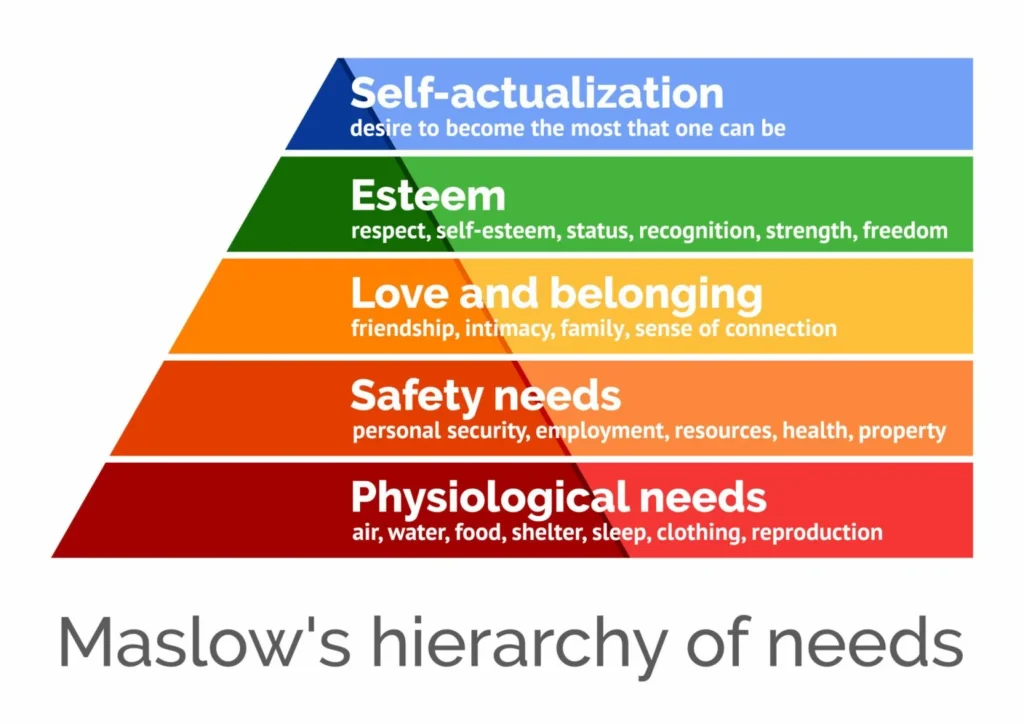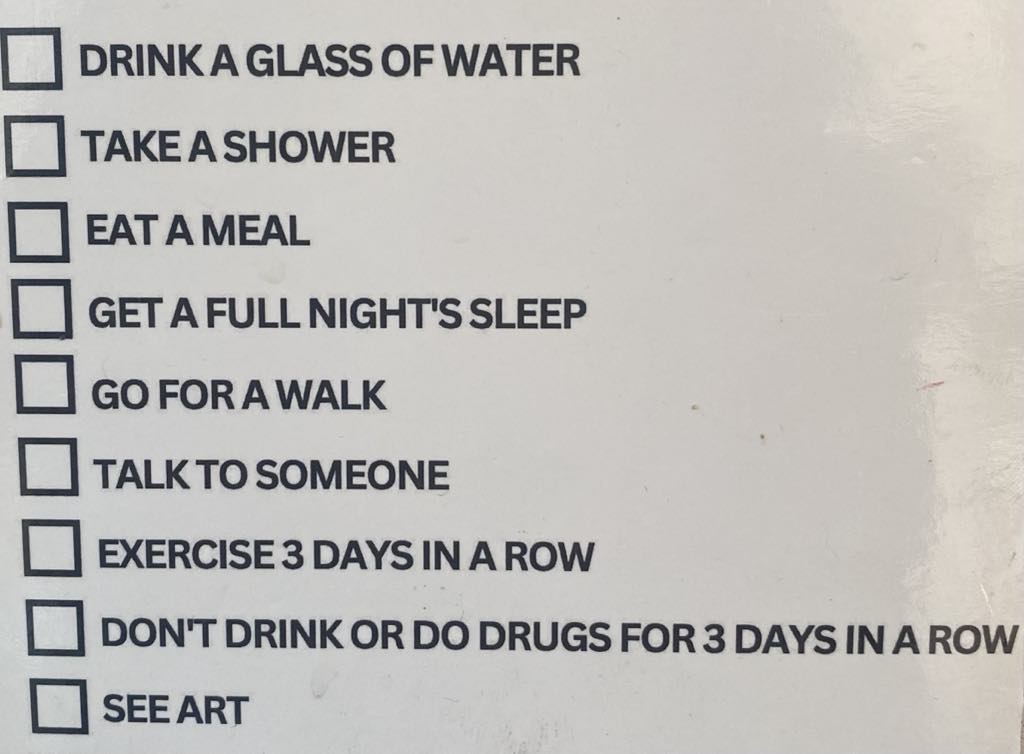Sometimes a handy diagram is useful, especially when we are feeling lost. We can turn towards a list of targets to see where we need to put in more effort, and where we may be over exerting ourselves and need to re-prioritise and re-direct our time and energy. Here are some examples…
“Pillars of wellbeing” generally refer to the main columns that hold up an individual’s overall health and happiness. Columns that hold up your metaphorical castle are often drawn from the following list: mental, physical, social, financial, occupational, purpose & fulfillment, spiritual, environmental. Yet as Maslow pointed out in his ‘Heirarchy of Needs’, some of these pillars are dependent on the other ones being in position… with his famous triangle depiction:)

Maslow loudly highlighted how vulnerable we are when our basic needs are not being met.
Whilst considering where we are on this scale, which needs require the most attention – are there further ideas to enable us to feel more stable and content? The NHS and various other mental health support groups have highlighted a map called the ‘5 Ways to Wellbeing’: five categories that can encourage the pillars of wellbeing to strengthen. I find these categories helpful… all it takes is a little increase in one of them and the overall system gets a boost. We don’t have to improve everything all at once, or suddenly feel better – that is sometimes too much to demand. But a small shift can add oodles, a tiny moment of relief can be a big deal. I will be adding an extra to the list, which I feel is a category of its own that deserves attention…
- Learning something new or creating something. Do you have a hobby? Or an interest from your past you have never acted on? Or give something totally random a go because this is time to experiment. It could be learn a new language, or try an arts and crafts workshop, go on walks with a camera to see what images you can snap, order a set of water colour paints, join the local pub pool team, go to some music venues, buy a tarot pack, get a recipe book. The list goes on… throw the net wide.
- Physicality. You have a body, and your body’s wellbeing is important. This could mean activity and exercise: improving your circulation, releasing pent up energy, achieving an exercise goal – wherever the goal post. Be it a walk around the bloc once a day, a short stretching session at home, or a regular exercise class… your body will have its own needs and limitations. And sometimes, necessary physical self care is at the other end of the spectrum: have a relaxing bath, getting a massage. If you need rest listen to your body and treat it. If you need to push your self, set an achievable challenge.
- Making social connections. Friends, family, going to therapy, joining a therapy group, attending a social group, getting outside maybe to the park and smiling at some strangers as you pass them, speaking to your neighbours or the staff at the local shop…. we are pack animals of sorts. If you are constantly around others, you may need space and solo time; but if you are isolated, moments of connection are important. Even islands meet via the ocean. It is proven that isolation can become damaging – there is a balance to be struck. I will do a post on group therapy spaces in the future.
- Mindfulness. A practice that encourages relaxation and grounding, whether settling into your body or zoning out into the world around you. I made a blog post on Mindfulness, please have a look.
- Give. The generosity paradox is that giving can become rewarding. Whether it is smiling at a stranger, giving a gift to a friend, or volunteering at a food bank… if you are lacking in purpose, or feeling isolated, an act of giving may be what you need to feel more uplifted.
- Being in Nature. It’s out there and it’s rejuvenating. It offers space, fresh air, wholesome distraction, vitamin D, and connection to the earth we live on. Getting outside, in various weathers, has been shown to support emotional wellbeing. Both mindfulness and physicality are readily activated in nature spaces.
Paying some attention to these categories can help improve emotional wellbeing. Write these categories on post it notes or on the fridge and when you’re at a loss or wondering where to start – start with one of them. And sometimes we just need an external reminder us of the necessary basics, practical stuff, the baseline tips, foundational steps that support our wellbeing. So I will leave here a list that I have also found useful, humorous, a bit blunt, ultimately another simple check list to have on the fridge or on the dashboard – something to start with or turn to at your lowest of lows.

